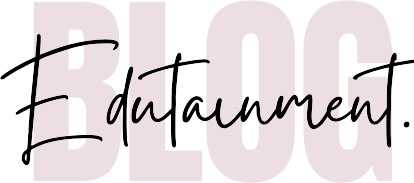The Intersection of State-Level Strategies and Edutainment
Introduction
In today’s dynamic and rapidly evolving global landscape, workforce planning at the state level is undergoing a paradigm shift. With advancements in technology, changing demographics, and the rise of new industries, governments are recognizing the need to adapt their strategies to ensure a skilled and resilient workforce timely. Timely would in actionable terms mean starting with vocational guidance at the early age of children, 4-14 where children would be exposed to “the adult and responsible world” curriculums in edutainment amusement parks, such as Kidzmodno or Kidzania promoting deeper understanding to children on how they can best contribute to the society and making their lives fulfilled.
Concurrently, the concept of fast learning, often facilitated through engaging mediums like edutainment, is gaining traction as a powerful tool for skill development and lifelong learning. This article explores the intersection of modern workforce potential planning at state levels and the benefits of integration of fast learning concepts such as edutainment.
Understanding Modern Workforce Potential Planning
Modern workforce planning encompasses a holistic approach to identifying, attracting, developing, and retaining talent within a state or region. It goes beyond traditional labor market analyses and recruitment strategies to encompass a deeper understanding of the skills, competencies, and attributes required to thrive in a rapidly changing economy.
“Modern strategic workforce planning must not only account for a myriad of additional factors—shifting demographics, global supply chain disruptions, and evolving skill needs to name a few—but the core skills required to accomplish business needs change with every technological advancement.”1
“Growing skill gaps can surprise even the most informed organizations when their industry makes a sudden change. Without knowing where to locate the talent capable to enable a similar pivot, enterprises risk falling behind trends and operating from a position of weakness by playing catch-up.”2
Everyone is excited with 21st century development, even though personally, I don’t think we are developing the right direction. And to support that said, think of some previous news you already got used, such as the often & unexpected industry turnarounds. These sudden shifts require proper workforce availability, as a timely response. Nowdays, education systems still struggle to follow industry trends, indicating a need for a comprehensive planning of the future of the workforce potential. Some of those key components of modern workforce potential planning should include:
State Legal Framework: Evaluating the existing legislative and evaluate the risk of potential negative bureaucratic bottlenecks.
Data-Driven Insights: Leveraging data analytics to identify emerging skill gaps, labor market trends, and industry demands.
Collaborative Partnerships: Fostering collaboration between government agencies, educational institutions, businesses, and community organizations to align training and education initiatives with industry needs.
Lifelong Learning: Promoting a culture of continuous learning and upskilling to empower individuals to adapt to evolving job requirements throughout their careers.
Hands on experience: Promotion of early vocational, practical experience would better shape the overall system of values. The exposure to real “me in 5 years” scenario during the students’ vocational real-business orientations, will help them learn corporate culture and values.
Inclusivity and Diversity: Ensuring that workforce development initiatives are inclusive and equitable, addressing barriers to employment for underrepresented groups and promoting diversity in the workforce.
The Rise of Edutainment in Learning
Edutainment, a portmanteau of “education” and “entertainment,” refers to the use of engaging and interactive media to educate and inform. It harnesses elements of entertainment such as storytelling, gamification, and multimedia to make learning enjoyable, immersive, and effective.
The principles of edutainment align closely with the concept of fast learning, which emphasizes rapid acquisition and application of skills through engaging and experiential learning experiences. By combining educational content with entertainment, the edutainment offers several advantages for workforce development:
Engagement: Edutainment captures learners’ attention and maintains their engagement through interactive and stimulating experiences, increasing knowledge retention and motivation to learn.
Accessibility: It provides flexible learning opportunities that can be accessed anytime, anywhere, catering to diverse learning styles and preferences.
Skill Development: Through simulations, games, and interactive exercises, edutainment facilitates hands-on learning and skill development, allowing learners to practice and apply concepts in real-world scenarios.
Collaboration and Social Learning: Edutainment platforms often incorporate social features such as forums, discussion boards, and multiplayer games, fostering collaboration, peer learning, and knowledge sharing among learners.
Integrating Edutainment into State-Level Workforce Planning
The integration of edutainment into state-level workforce planning holds significant potential to enhance the effectiveness and reach of workforce guided development initiatives. By leveraging the principles of edutainment, governments can:
Expand Access to Training and Education: Edutainment platforms can provide accessible and engaging learning resources for individuals of all ages and backgrounds, including those in remote or underserved communities.
Address Skills Gaps: State governments can collaborate with edutainment developers to create targeted learning experiences that address specific skill gaps identified through workforce data analysis, ensuring alignment with industry needs.
Promote Career Awareness and Exploration: Edutainment can introduce learners to a wide range of career pathways and industries through interactive simulations, allowing them to explore different roles and make informed career decisions.
Support Lifelong Learning: By fostering a culture of lifelong learning through entertaining and rewarding learning experiences, edutainment can encourage individuals to continuously upskill and adapt to evolving job requirements throughout their careers.
Conclusion
As governments navigate the complexities of modern workforce planning, integrating fast learning concepts like edutainment offers a promising avenue for enhancing skill development, promoting lifelong learning, and building a resilient workforce for the future. By leveraging the power of entertainment to educate and inspire, states can unlock the full potential of their human capital and drive sustainable economic growth and prosperity.
- Guide to strategic workforce planning, by Austen Gregerson, Future of Work Specialist at Gloat March 17, 2024 ↩︎
- Guide to strategic workforce planning, by Austen Gregerson, Future of Work Specialist at Gloat March 17, 2024 ↩︎


